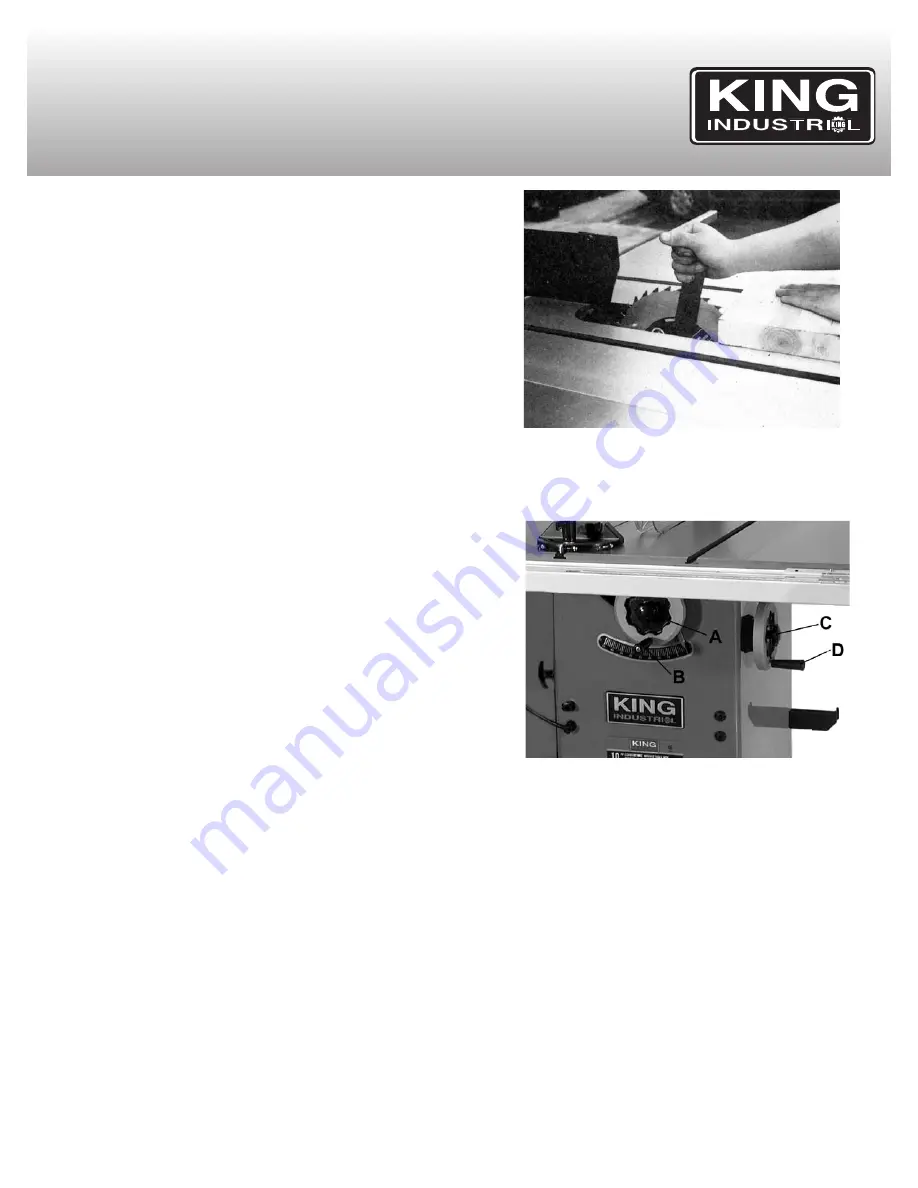
OPERATION
INSTALLING / CHANGING BLADES
1. Turn off saw and disconnect the electrical plug.
2. Raise the saw blade to its maximum height, hold the guard up and lock
the saw at 0 degrees. Remove the table insert.
3. Jam a large piece of scrap wood into the blade teeth at the front. See
Fig. 8.
4. Place the blade wrench over the arbor nut and pull the wrench toward
you. Remove the arbor nut, flange and saw blade.
5. Place the new blade on the arbor shaft making certain the teeth point
down towards the front of the saw. Replace the flange and the arbor
nut.
6. Place the scrap wood in the blade’s teeth in the rear. Hold carefully so
if it silps or the blade turns, your hand will not contact the blade.
7. Using the wrench provided, securely tighten the arbor nut. Remove the
wrench and replace the table insert.
BLADE RAISING AND TILTING MECHANISIM
To raise or lower the blade, loosen lock knob (A) Fig. 9. and turn raising
handwheel (B) with the exception of hollow ground blades. When desired
height is obtained, tighten lock knob (A).The blade should be raised 1/8”
to 1/4” above the top surface of the material being cut. With hollow
ground blades the blade should be raised to the maximum to provide
chip clearance. To tilt the saw blade, loosen lock knob (C) Fig. 9. and turn
tilting handwheel (D). When desired angle is obtained, tighten lock knob
(C).
SAFETY PRECAUTIONS BEFORE OPERATION
The operation of power tools involves a certain amount of hazard for the
operator. Before attempting regular work we recommend you get the feel
of operations using scrap lumber to check settings. Read entire
instructions before you start to cut workpiece. Always pay attention to
safety precautions to avoid personal injury.
OPERATION
Plain sawing includes ripping and crosscutting, plus a few other standard
operations of a fundamental nature. The following methods feature
safety. As with all power tools there is a certain amount of hazard
involved with the operation and use of the tool. Using the tool with the
respect and caution demanded as far as safety precautions are
concerned will considerably lessen the possibility of personal injury.
However, if normal safety precautions are overlooked or completely
ignored, personal injury to the operator can develop. It is good practice
to make trial cuts using scrap material when setting up you saw for
operation.
FIGURE 8
FIGURE 9











